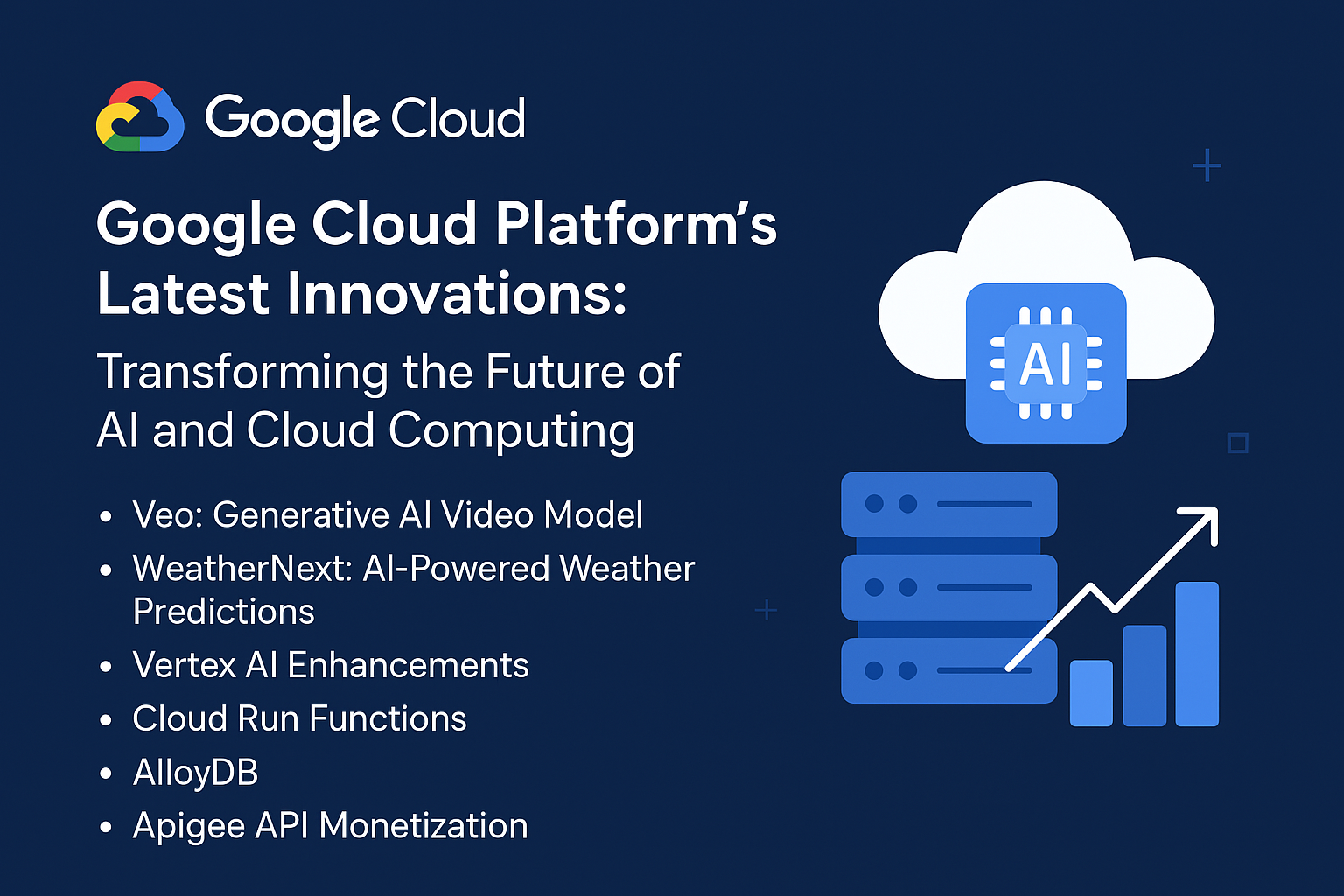
Cloud Security in AI and Deep Learning
citadelcloud
As organizations increasingly adopt artificial intelligence (AI) and deep learning technologies, the need for robust cloud security measures becomes paramount. The cloud offers unparalleled scalability and flexibility for deploying AI solutions, but it also introduces unique security challenges. In this blog post, we will explore the intersection of cloud security and AI, examining the risks, best practices, and emerging trends in this rapidly evolving field.
Understanding AI and Deep Learning in the Cloud
What is AI and Deep Learning?
Artificial intelligence encompasses a range of technologies that enable machines to perform tasks typically requiring human intelligence. Deep learning, a subset of AI, employs neural networks with multiple layers to analyze and interpret complex data patterns. These technologies are increasingly being deployed in the cloud, allowing organizations to harness their power without the need for extensive on-premises infrastructure.
The Benefits of Cloud-Based AI Solutions
Cloud-based AI solutions offer several advantages:
- Scalability: Organizations can easily scale their AI workloads up or down based on demand, avoiding the costs associated with maintaining physical servers.
- Cost-Effectiveness: The pay-as-you-go model of cloud services allows businesses to manage costs effectively, only paying for the resources they use.
- Accessibility: Cloud-based AI tools can be accessed from anywhere, enabling collaboration and innovation across geographically dispersed teams.
- Rapid Deployment: Organizations can quickly deploy AI models and iterate on them, accelerating the development of AI-driven applications.
Cloud Security Challenges for AI and Deep Learning
While the benefits of cloud-based AI are significant, they also come with a set of security challenges:
Data Security and Privacy Risks
AI systems often require large datasets to train models effectively. These datasets can contain sensitive information, and improper handling can lead to data breaches or privacy violations. Organizations must ensure that they comply with data protection regulations such as GDPR and HIPAA when using cloud-based AI solutions.
Model Theft and Intellectual Property Risks
AI models can be considered valuable intellectual property. Cybercriminals may attempt to steal these models to gain competitive advantages or sell them on the dark web. Protecting AI models from theft is crucial for maintaining a company’s competitive edge.
Vulnerabilities in AI Algorithms
AI algorithms can be susceptible to adversarial attacks, where malicious actors manipulate input data to deceive the model. These vulnerabilities can lead to incorrect predictions or classifications, potentially causing harm in critical applications such as healthcare or autonomous vehicles.
Insider Threats
Employees with access to sensitive data and AI models may intentionally or unintentionally compromise security. Organizations must implement strict access controls and monitor user activity to mitigate the risk of insider threats.
Best Practices for Enhancing Cloud Security in AI
To safeguard cloud-based AI solutions, organizations can adopt several best practices:
1. Data Encryption
Encrypting data at rest and in transit is essential for protecting sensitive information. Organizations should utilize encryption protocols to ensure that unauthorized parties cannot access or manipulate data.
2. Secure Access Controls
Implementing role-based access controls (RBAC) ensures that only authorized personnel can access sensitive data and AI models. Regularly reviewing and updating access permissions can further reduce the risk of unauthorized access.
3. Regular Security Audits
Conducting regular security audits helps organizations identify vulnerabilities and assess the effectiveness of their security measures. These audits should include assessments of both cloud infrastructure and AI algorithms.
4. Adversarial Training
Adversarial training involves exposing AI models to adversarial examples during the training process, enabling them to learn how to recognize and resist manipulation attempts. This technique can enhance the robustness of AI models against adversarial attacks.
5. Incident Response Planning
Organizations should develop and regularly update an incident response plan to address potential security breaches. This plan should outline the steps to take in the event of a data breach or cyberattack, ensuring a swift and effective response.
6. Collaborating with Cloud Providers
Partnering with reputable cloud service providers that prioritize security can significantly enhance an organization’s security posture. Organizations should evaluate the security measures and compliance certifications of potential providers before making a decision.
Emerging Trends in Cloud Security for AI
As the landscape of AI and cloud computing continues to evolve, several emerging trends are shaping the future of cloud security:
1. Zero Trust Architecture
The zero trust security model operates on the principle of “never trust, always verify.” This approach requires continuous verification of user identities and devices, minimizing the risk of unauthorized access to sensitive data and AI models.
2. AI-Driven Security Solutions
AI technologies can be leveraged to enhance security measures in cloud environments. AI-driven security solutions can analyze vast amounts of data in real time, detecting anomalies and potential threats more efficiently than traditional methods.
3. Enhanced Compliance and Regulatory Frameworks
As governments and regulatory bodies increase scrutiny on data protection practices, organizations must stay informed about evolving compliance requirements. Cloud service providers are likely to offer enhanced compliance tools to help organizations navigate these regulations.
4. Focus on Privacy-Preserving AI
Privacy-preserving AI techniques, such as federated learning and differential privacy, are gaining traction as organizations seek to leverage AI while minimizing risks to individual privacy. These techniques allow organizations to train AI models without exposing sensitive data.
Conclusion
The integration of AI and deep learning technologies into cloud environments offers immense potential for innovation and efficiency. However, it also introduces significant security challenges that organizations must address proactively. By implementing best practices, staying informed about emerging trends, and collaborating with trusted cloud providers, businesses can enhance their cloud security posture while harnessing the power of AI. As the field continues to evolve, staying ahead of potential threats will be crucial for organizations looking to thrive in the digital age.
FAQs
1. What are the main security risks associated with AI and deep learning in the cloud?
The main security risks include data breaches, model theft, vulnerabilities in AI algorithms, and insider threats.
2. How can organizations protect sensitive data when using cloud-based AI solutions?
Organizations can protect sensitive data through encryption, secure access controls, regular security audits, and compliance with data protection regulations.
3. What is adversarial training, and why is it important?
Adversarial training involves exposing AI models to adversarial examples during training to enhance their robustness against manipulation attempts. It is important for ensuring the reliability of AI systems in critical applications.
4. How does a zero trust architecture improve cloud security?
A zero trust architecture improves cloud security by requiring continuous verification of user identities and devices, reducing the risk of unauthorized access to sensitive data and AI models.
5. What role does AI play in enhancing cloud security?
AI can analyze large volumes of data in real time, detecting anomalies and potential threats more efficiently than traditional security methods, ultimately enhancing cloud security measures.
Table of Contents
Latest Articles

ADDRESS
Houston, Texas USA
US LINE
+1 (346) 652-4970
NIGERIA LINE
081 2852 0152
MAIL ADDRESS
info@citadelcloudmanagement.com
QUICK LINKS
- © 2025. All Rights Reserved By Citadel Cloud Management
